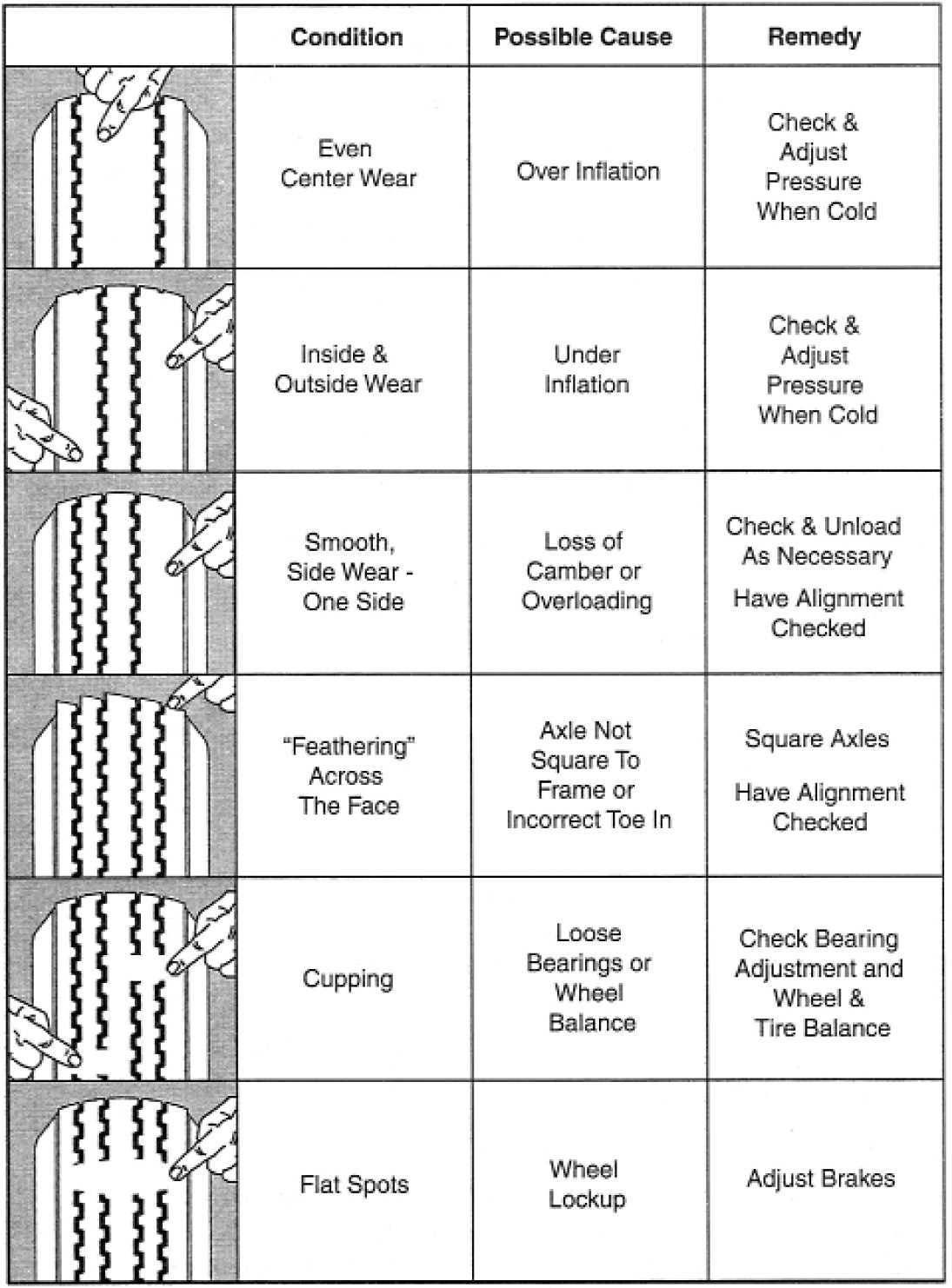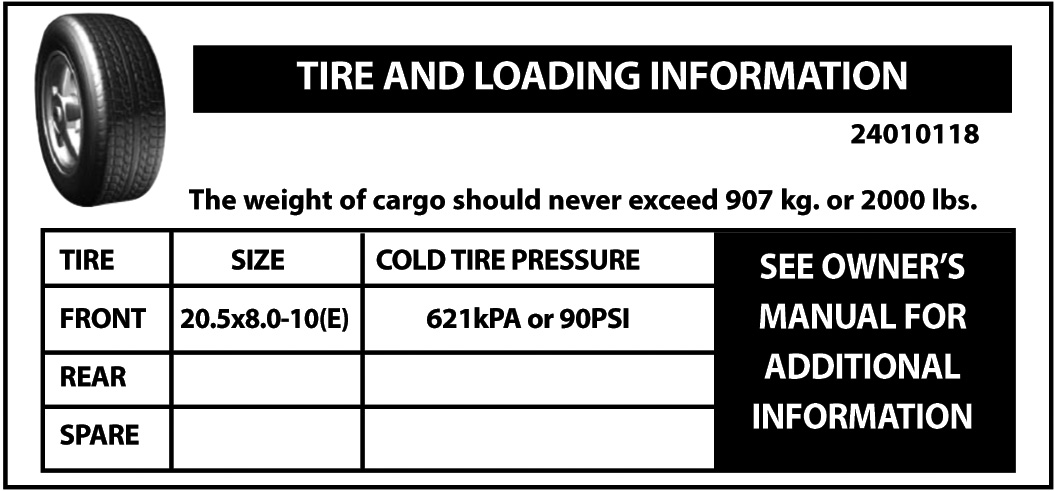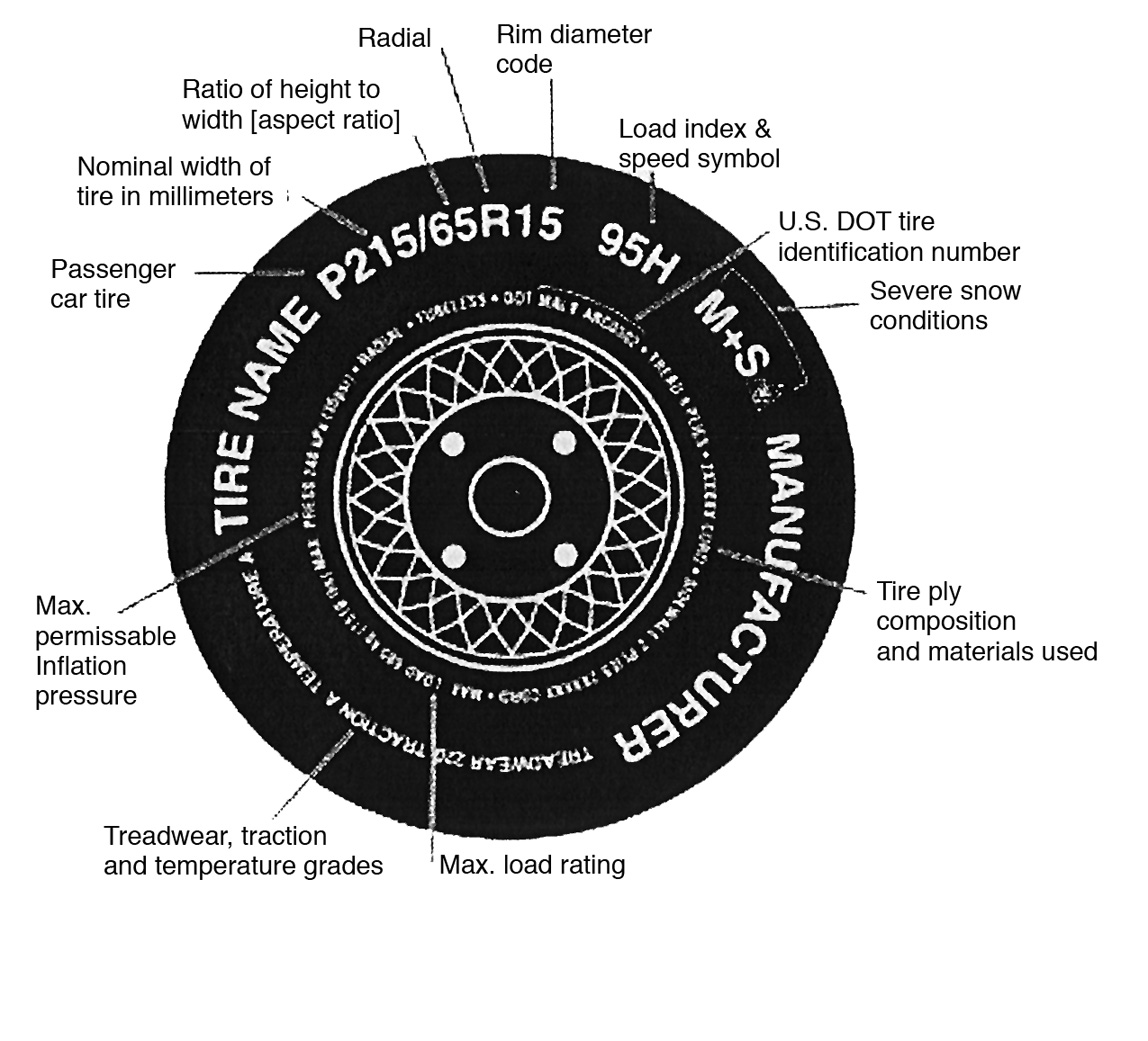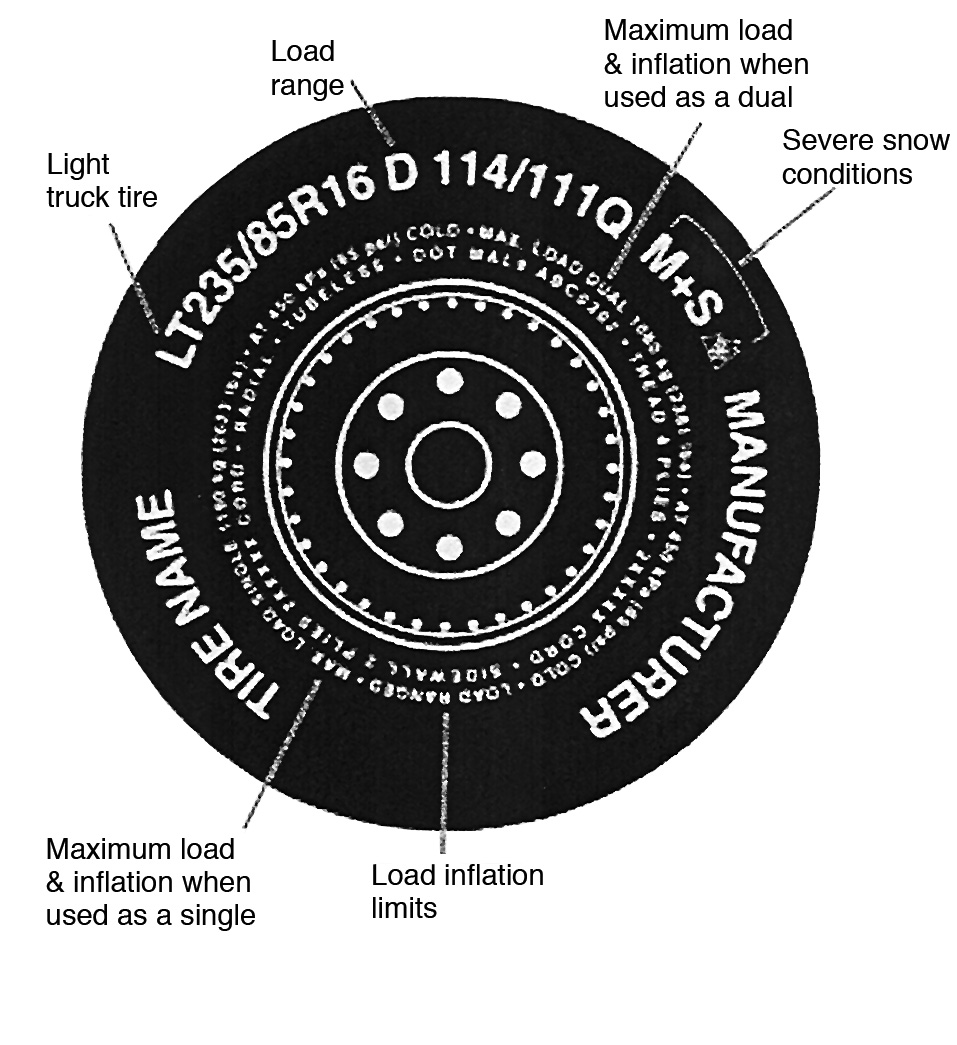Tire maintenance is undoubtedly the most critical safety component on a vehicle. Where the rubber meets the road affects traction, handling, steering, stability, and braking. Because of this, a sudden tire failure can have serious consequences, especially if it occurs at highway speeds.
It’s amazing that tires hold up as well as they do considering their vulnerability to road hazards. Many tires today are easily capable of going 60,000 to 80,000 miles or more — provided they are properly installed, maintained, and inspected regularly (see Tire Load Range chart, right). With proper care, tire maintenance, and “normal” use, most tires will go the distance without a problem. But sometimes tires fail.
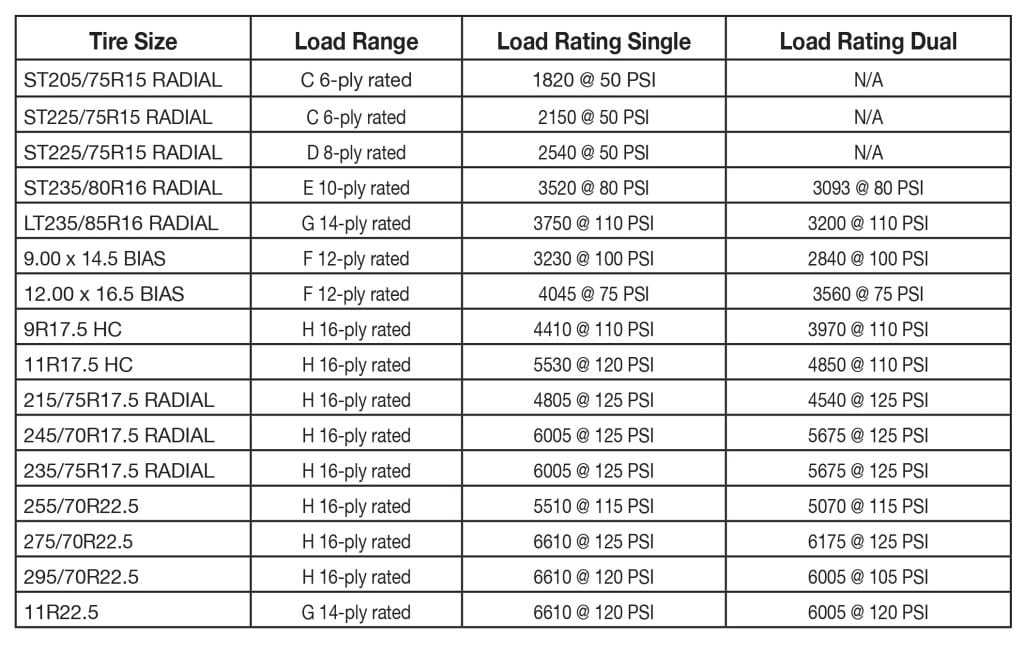
“Tire –blowout season (yes, there really is a “Tire-blowout season”) runs from roughly the middle of May through early October (tire companies closely track such information but guard it carefully). The reason more tires fail from late spring to early fall is simple: That’s when the outside temperature is the hottest, and when motorists are driving farther, and faster, in more heavily loaded vehicles. The combination can push a neglected or injured tire beyond its breaking point. However, tire failures can happen any time of year, especially in the warmest parts of the United States. Besides heat and overweighted trailers, other major bad guys for tires include lack of proper air pressure and, of course, impacts with obstacles.”
Excerpt from Popular Mechanics, “Why Blowouts Happen & How to Avoid Them”
Tire Maintenance – What to Watch For:
- Sign of tire wear (click here for tips on what to look for on Wheels & Tires) can be reviewed on the Tire Wear Chart (right).
- Trailer tires may be worn out even though they still have plenty of treads left. This is because trailer tires have to carry a lot of weight all the time, even when not in use. It is actually better for the tire to be rolling down the road than to be idle. During use, the tire releases lubricants that are beneficial to tire life. Using the trailer tires often also helps prevent flat spots from developing.
If you think that you tires may be worn below legal tolerances, place a Lincoln penny head-down in the groove between the treads. If you can see the top of Lincoln’s head, your tire probably needs to be replaced.
Tire Failure: The number one cause of tire failure is improper inflation.
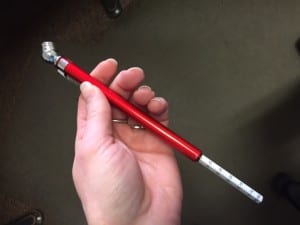
It is important to check your trailer’s tire pressure at least once a month for these reasons:
- Most tires may naturally lose air over time
- Tires can lose air suddenly if you drive over a pothole or other object or if you strike the curb when parking.
- With radial tires, it is usually not possible to determine under inflation by visual inspection.
It is recommended to carry a tire pressure gauge in your tow vehicle.
- Underinflation: Check your tire’s sidewall for recommended PSI (Max Permissible Inflation Pressure). If tire pressure is lower than recommended PSI, take note of the difference between measured pressure and correct pressure and then add the missing pounds of air pressure to each tire that is underinflated.
- Overloaded: Check tire placard, know your capacities, on the tire face the Load Range is listed C, D, E, G, etc. The Load Range tells you what the weight capacity of your tire(s) is, surpassing this specified load limit can result in tire failure.
- Potholes and other Road Hazards: Hazards on the road can impact the internal structure of the tire and be the cause of a blowout in months to follow.
- Weather Checking: If a trailer tire sits stationary and is exposed to the environment for extended periods of time like weeks, months, etc. the tire’s surface can start to crack typically on the sidewalls or at the base of the tread grooves causing weather checking, or ozone cracking. If this is observed then it is time to start looking into replacing the tires.
- Lack of Maintenance (i.e. all of the above)
For more information on tire safety, read the National Highway Traffic Safety Administration’s: Tire Safety: Everything Rides On It (PDF).
This article is one of a multi-part “Spring Trailer Series” by Felling Trailers.
Read the other posts here: Trailer Inspection Checklist: Get Ready for Spring
